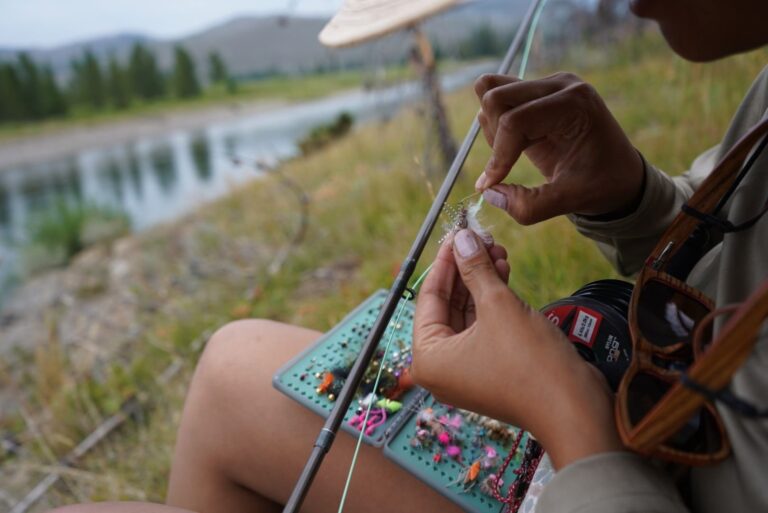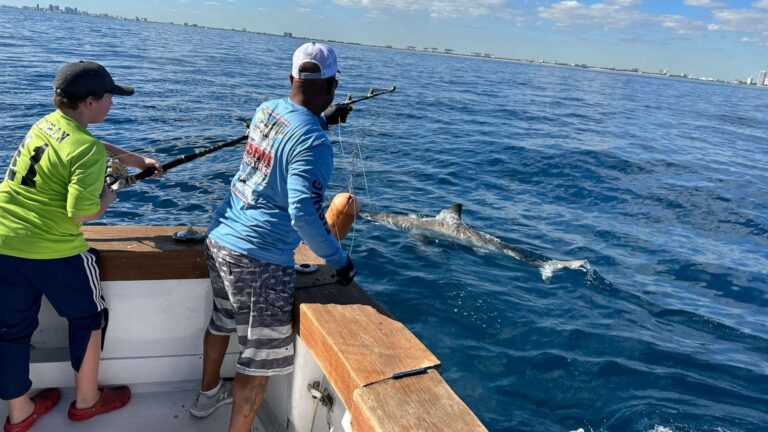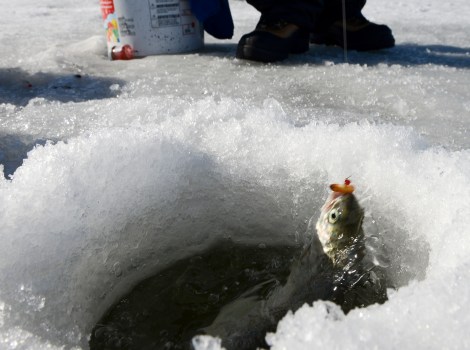Too much wind for fishing can make it difficult and dangerous to cast and control the boat. In addition, strong winds can create choppy water conditions, making it challenging to detect bites and maintain balance.

Credit: www.cntraveller.com
Understanding The Effects Of Wind On Your Fishing Experience
Factors To Consider When Assessing Wind Conditions For Fishing
When it comes to planning a fishing trip, understanding the effects of wind can make all the difference in your fishing experience. Before you head out to cast your line, it’s crucial to assess the wind conditions and how they will impact your fishing adventure.
Here are a few key factors to consider:
- Wind speed: The speed of the wind is a crucial factor to consider when assessing its impact on fishing. Strong winds can create rough water conditions, making it difficult to maneuver your boat or cast your line effectively. On the other hand, calm winds may not provide enough movement on the water surface, affecting the visibility of your bait and lures.
- Wind direction: The direction from which the wind is blowing can significantly influence fish behavior and movement. Certain species of fish may be more active and feeding in areas where the wind is pushing baitfish and insects towards the shore. Understanding wind direction can help you identify potential hotspots for casting your line.
- Fishing location: The location where you plan to fish can also play a role in determining the impact of wind conditions. A sheltered fishing spot, such as a cove or bay, might provide some respite from strong winds, while an exposed shoreline or open lake can be subject to more significant wind effects. Consider the topography and features of your fishing site to gauge how wind will affect the water movement and fish behavior.
- Time of day: Wind conditions can vary throughout the day, so it’s important to consider the time of your fishing expedition. Early mornings and late afternoons tend to have lighter winds compared to midday when winds are often stronger. Planning your fishing trip during periods of lower wind speeds can enhance your chances of a successful catch.
How Wind Affects Water Movement And Fish Behavior
The wind has a profound impact on water movement and fish behavior. Understanding these effects can help you adapt your fishing techniques accordingly. Here’s how wind influences fishing conditions:
- Surface agitation: Wind creates ripples and waves on the water’s surface, leading to increased oxygen diffusion and mixing. This can attract fish to shallower areas and turbulent zones, where they can find better feeding opportunities. Additionally, surface agitation can help conceal the presence of anglers and make it easier to approach fish without spooking them.
- Baitfish movement: Wind influences the movement of baitfish and other aquatic organisms. Strong winds can push baitfish towards the shore or concentrate them in specific areas, creating a feeding frenzy for larger predatory fish. Pay attention to wind direction and the movement of baitfish to position yourself for a successful catch.
- Altered fish behavior: Fish respond to changes in the environment, including wind conditions. The movement of the water caused by wind can either trigger feeding behavior or make fish more cautious and less likely to bite. Experiment with different fishing techniques and bait presentations to adapt to the specific behavior of fish under varying wind conditions.
- Casting accuracy and distance: Wind can make casting more challenging by affecting the accuracy and distance of your casts. Strong headwinds can make it difficult to cast long distances, while tailwinds may add extra distance to your casts. Adjust your casting technique, such as using heavier lures or adjusting your casting angle, to compensate for the wind and maintain accuracy.
Understanding the effects of wind on your fishing experience is essential for a successful outing. By considering factors such as wind speed, direction, fishing location, and time of day, you can better assess the conditions and adapt your fishing techniques accordingly.
Additionally, recognizing how wind affects water movement and fish behavior allows you to capitalize on the opportunities created by wind conditions. So, next time you plan a fishing trip, don’t overlook the impact of wind—it might just be the key to reeling in that trophy fish.
Optimal Wind Conditions For A Successful Fishing Trip
Fishing enthusiasts are well aware that certain weather conditions can significantly impact the success of their fishing trips. One such factor is wind speed and direction, which plays a crucial role in determining optimal fishing conditions. In this section, we will explore the ideal wind conditions that can lead to a fruitful and enjoyable fishing experience.
Ideal Wind Speed And Direction For Different Fishing Environments:
- In calm freshwater lakes, a light breeze from any direction can be beneficial as it helps in distributing scents and bait across the water surface, attracting fish from different areas.
- When fishing in saltwater environments, a gentle onshore breeze is often desirable. This wind direction carries baitfish and other food sources closer to the shore, luring predatory fish in search of an easy meal.
- Offshore fishing in deep sea conditions typically requires a steady wind blowing from a consistent direction. This wind helps create choppy water, which instigates a feeding frenzy among predatory game fish.
- For fly fishing enthusiasts, windy conditions can prove advantageous due to the presence of insects being blown onto the water, attracting fish towards the surface.
The Role Of Wind In Creating Optimal Bait Presentation:
- Wind creates ripples on the water’s surface, allowing bait to mimic natural movement. This enhances the presentation, making it more appealing to hungry fish.
- A gentle breeze can help disperse the smell of bait or attractants, spreading the scent and increasing its effectiveness in attracting fish.
- The movement caused by wind can also aid in concealing the presence of fishing lines and hooks, reducing the chances of fish becoming wary and avoiding the bait.
How Wind Influences The Feeding Patterns Of Fish:
- Wind-induced wave action oxygenates the water, making it more conducive for fish to feed actively.
- Wind-driven currents push smaller aquatic organisms and baitfish towards designated areas, attracting larger predatory fish.
- Fish tend to be more active and easily lured during windy conditions, as the disturbance on the water’s surface triggers their feeding instincts.
- Wind can create pockets of calm water along shoreline structures or breakwaters, where fish seek refuge from the choppier open water. Targeting these sheltered areas can greatly increase fishing success.
Understanding the impact of wind on fishing conditions is essential for a successful angling experience. By taking advantage of the optimal wind speed and direction, anglers can ensure they are well-positioned to attract and catch a variety of fish species.
So, the next time you plan a fishing trip, don’t forget to check the wind forecast and adjust your strategy accordingly. Happy fishing!
Recognizing When Wind Is Too Much For Fishing
Identifying Dangerous Wind Conditions That May Hinder Your Fishing Experience
- Wind speed: Pay attention to wind speed, as anything above 15-20 mph can make fishing difficult and uncomfortable.
- Wind direction: Consider the direction the wind is blowing from. A headwind can create challenging casting conditions, while a tailwind can make it difficult to control your line.
- Wind gusts: Be aware of sudden gusts of wind, as they can make it harder to maintain your balance and control your fishing gear.
Safety Tips For Fishing In Strong Winds
- Wear appropriate clothing: Dress in layers to stay warm and wear a hat to protect your head from gusty winds. Don’t forget to wear a life jacket for added safety.
- Secure your equipment: Make sure your fishing gear is properly secured to prevent it from being blown away by strong winds. Use rod holders or sandbags to keep your equipment stable.
- Be cautious on the water: Stay vigilant and watch out for any changes in the wind patterns. Be mindful of any debris or floating objects that may pose a safety hazard in strong winds.
- Adjust your casting technique: In windy conditions, use shorter and more controlled casts to maintain accuracy. Consider sidecasting or using a sidearm technique to minimize the impact of the wind.
When To Reschedule Or Adjust Fishing Plans Due To Excessive Wind
- Constant wind: If there is a constant and strong wind, it might be best to reschedule your fishing trip. Fishing in such conditions can be frustrating and may result in poor catches.
- Safety hazards: If the wind is accompanied by heavy rain, thunderstorms, or rough waters, it’s crucial to prioritize safety and postpone your fishing plans.
- Unfavorable fishing conditions: In certain situations, excessive wind can disturb the water’s surface, making it difficult for fish to detect bait or lures. If the water is choppy and visibility is low, it may be better to wait for calmer weather.
Remember, recognizing when wind is too much for fishing is important for ensuring a safe and enjoyable experience. Use these tips and guidelines to make informed decisions about fishing in windy conditions, and don’t hesitate to reschedule or adjust your plans when necessary.
Stay safe and tight lines!
Conclusion
Ultimately, understanding how much wind is too much for fishing is crucial for a successful and enjoyable fishing experience. It’s important to consider the wind speed and direction, as well as the type of fishing you plan to do. While some anglers may find that a slight breeze doesn’t hinder their fishing, others may prefer calmer conditions.
As a general rule, winds above 15 mph can make fishing more challenging, especially if you’re casting or working with lightweight lures. Strong winds can make it difficult to control your line, affect your casting accuracy, and disrupt the natural movement of your bait.
However, it’s not just about the wind speed; the wind direction and the structure of the fishing location also play a role. By monitoring the weather conditions, adjusting your fishing techniques, and being mindful of safety precautions, you can make the most out of your fishing trip even in windy conditions.
Remember, the key is to adapt and find the sweet spot that works for you, your preferences, and your fishing goals. Happy fishing!






